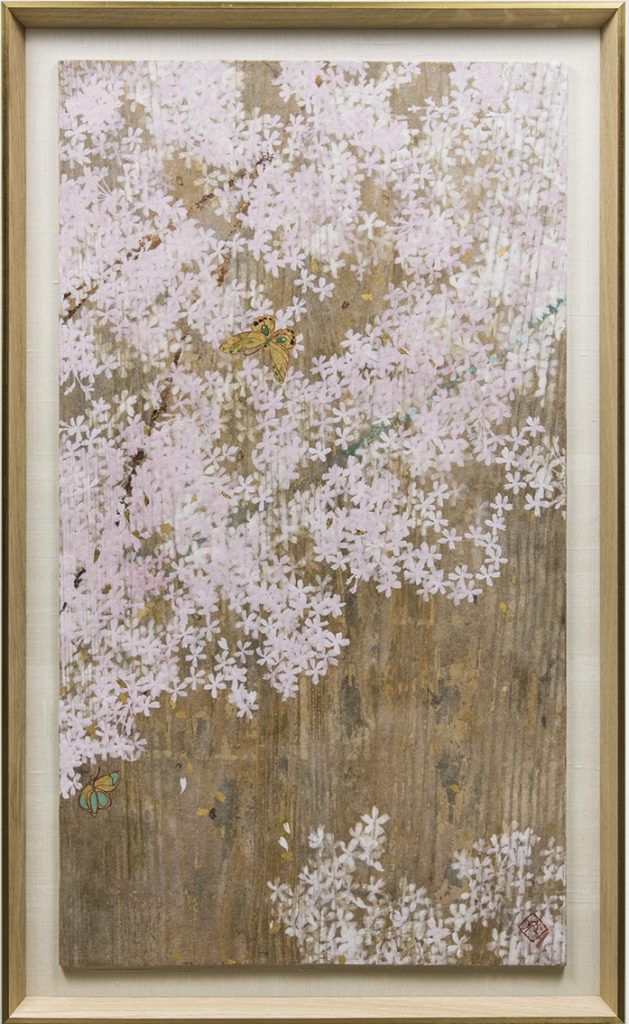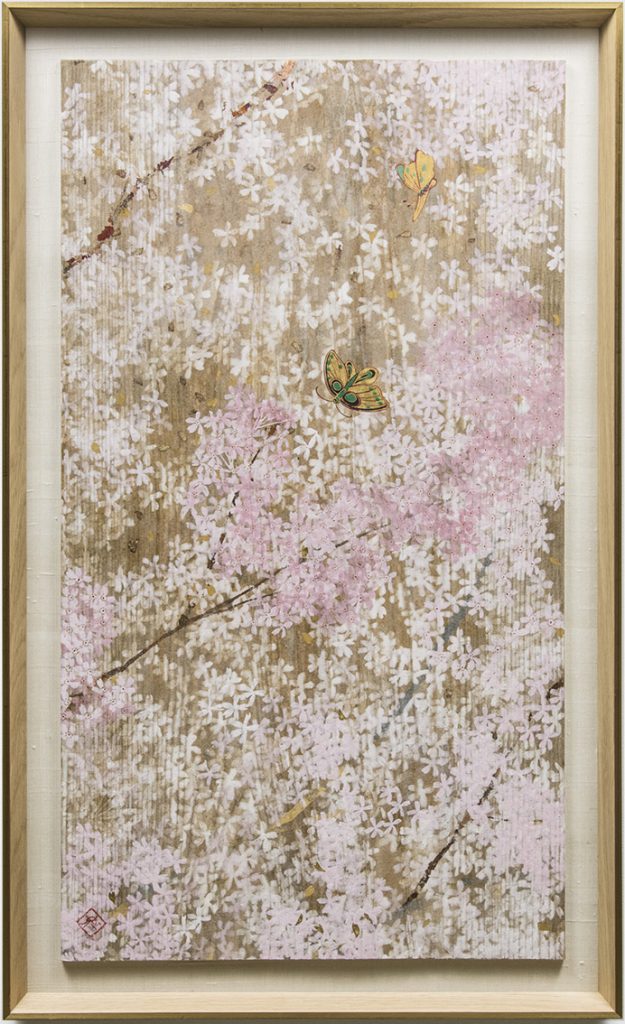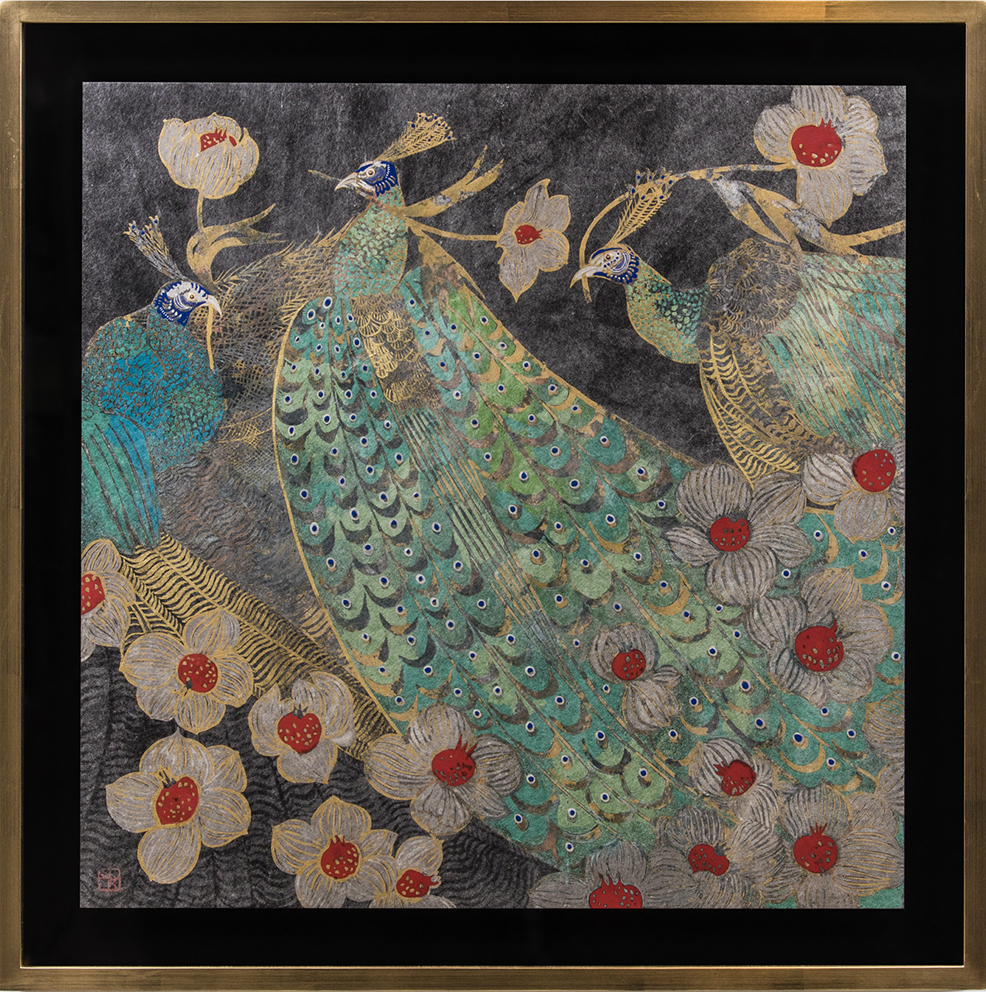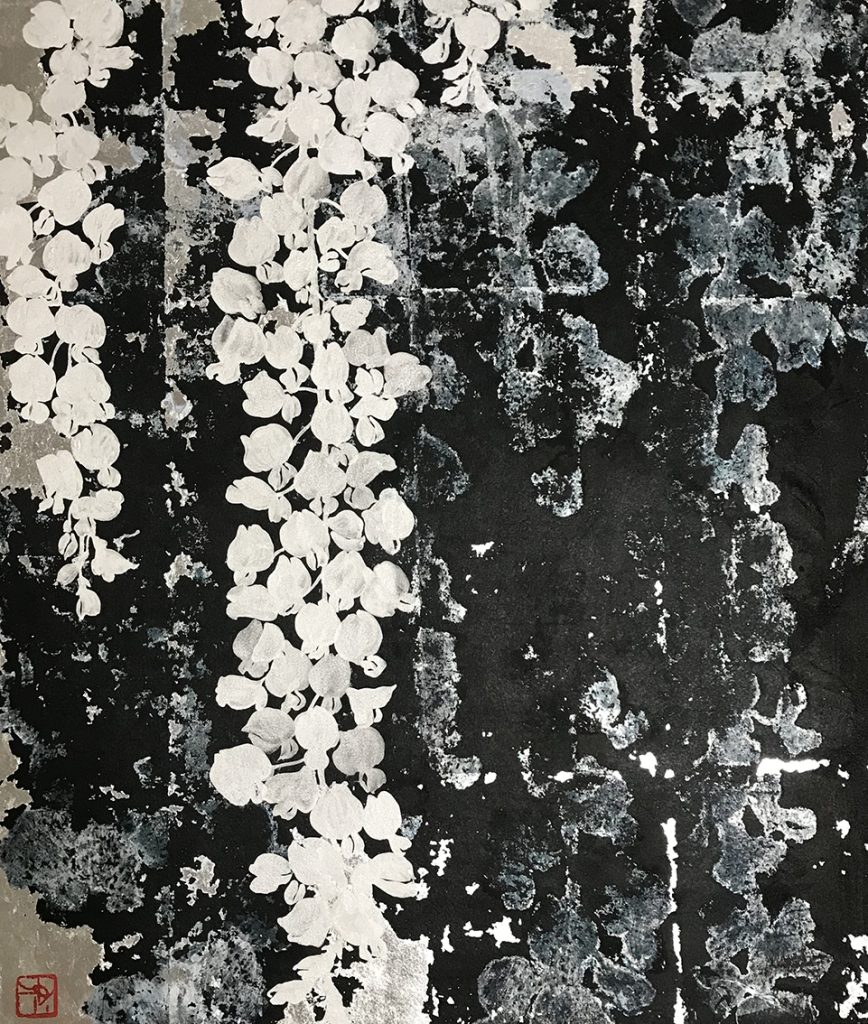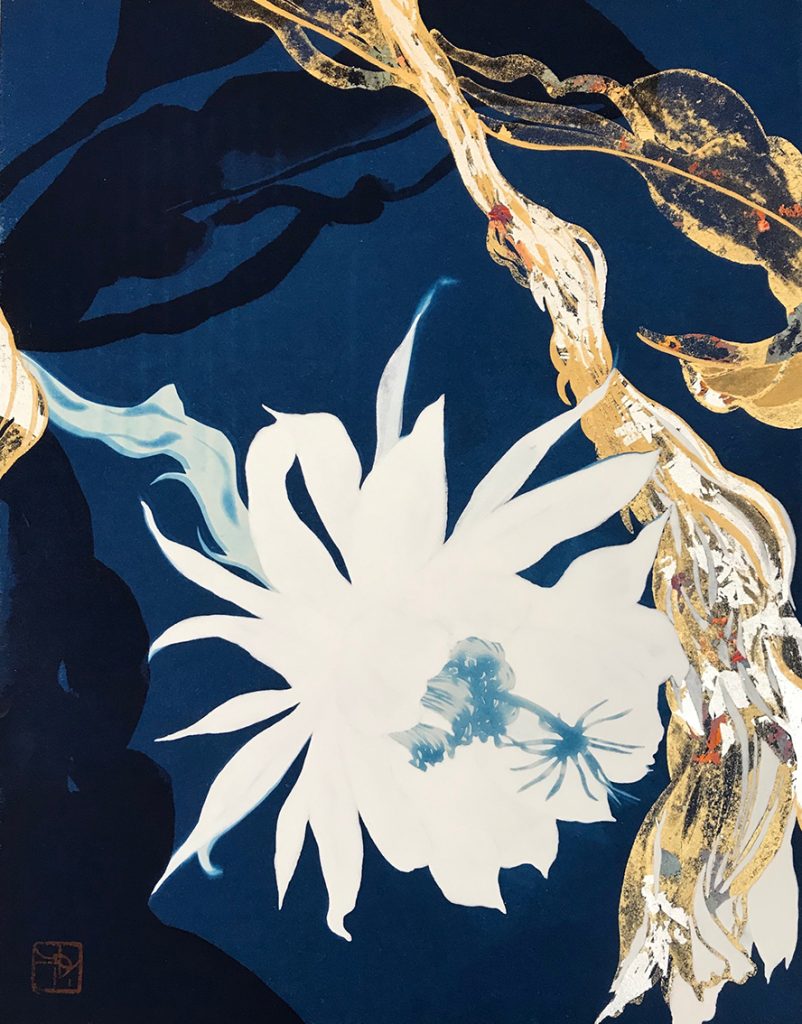Japanese Paintings: Improvised with Fire
Introduction by Keiko Fukai
Improvisation and decision –these are the two words that came to my mind when witnessing the process by which Meiko Kinoshita engaged in the production of her work.
Without making any under-sketches, she depicted images by charring the surface of the cedar board using a portable burner. It seemed that she already had the overall composition roughly mapped out in her head, but even so, I could not help but be surprised by her extemporaneity and decisiveness.
Only after carving sections of the cedar board on which the fire-burned images are depicted and then covering it with a layer of silk fabric, does the process of using materials characteristic to nihon-ga such as leafing and mineral pigments begin. Conceived in this way, Kinoshita’s paintings can be regarded as an entirely new type of nihon-ga, in which rough and dynamic elements appear to be in perfect harmony with the kindness of cherishing and appreciating nature.
The film includes scenes of the artist depicting images with a burner, which has not been introduced much thus far. We hope viewers will take this opportunity to witness the remarkable work and practice of this unparalleled artist.
Although nihon-ga often tends to be painted on washi (traditional Japanese paper), my main support medium is cedar board covered with a layer of silk fabric. What inspired me to start painting on cedar board was my experience of seeing Tawaraya Sotatsu’s sugito-e (paintings on cedar-wood doors) in Yoge-in Temple in Kyoto when I was in university. White elephants, lions, and mythical giraffe-like creatures were painted on cedar board, and I remember how the natural grain of the wood and the images depicted had seemed to come together as one over the years to create an air of magnificence. Having learnt that nihon-ga had also been painted on wood, I developed the desire to also pursue this method and technique.
I feel that the good thing about using wooden board as a support medium is that it is possible to singe it with a burner or carve the surface with a chisel. In the beginning I used to char the entire surface of the wood until it was blackened so as to also act as a sealer against any resin discharge. Eventually I started drawing on cedar board using the fire from the burner. I am highly attracted to the way in which it allows me to create expressions that cannot be achieved by a brush.
I cover the entire surface of the cedar board with silver leaf as I wish to create works that make use of the original grain of the wood. When a completely dry silver leaf layer is applied to the wood by rubbing it with a sponge, a silver grain pattern beautifully emerges. Back when I was a student I used to paint directly onto the cedar board, yet since I started to become concerned by the way in which the pigment seeped into the wood and caused the colors to dull, I now cover the board with a thin silk organdy fabric and paint on top of it. I’m still experimenting with various methods and materials, such as covering the organdy fabric with a further layer of thin tengujo paper (an extremely thin specialist kozo paper that is almost transparent).
In addition to pursuing a practice that places importance on and maintains an intimate connection to materials such as board and silk, I would like to continue challenging myself to produce works of epic scale. Cedar boards, which I use for my work, can be connected and expand both vertically and horizontally to any extent one wishes. Perhaps since ancient times, paintings for Japanese people, is something that is of considerable scale. For the people of a country who have enabled the transition of the seasons to unfold indoors by means of images depicted on byobu (folding screens) and fusuma (sliding doors), or have appreciated the garden landscape framed through open shoji (sliding window or room dividers) as if it were a painting, the desire to produce large paintings may indeed be an inevitable thing. I feel that when producing a large painting, there is some kind of force beyond me that is at work.
For me painting, rather than being something that I do alone, is that which I depict together with the materials. For this reason, the matière and other composing elements are co-creators in producing the work, and I always hope to value and appreciate the materials that best correspond to what I wish to illustrate. Asides from wooden board, I am experimenting with various things that may be incorporated into nihon-ga, such as employing the photographic printing technique of cyanotype in which sensitized paper is exposed to sunlight to produce monochrome blueprint images, and randomly covering the surface of the support medium with various colored leaf coating in a manner similar to gilding.
I started painting on cedar board after being impressed by the sugito-e I encountered in Kyoto, yet come to think of it, as a child I used to look up at the wood-grain patterns on the ceiling, and while asking myself what they looked like, had painted imaginary pictures through my mind’s eye across the entire ceiling. I believe that my origins (as an artist) had started around this time.

